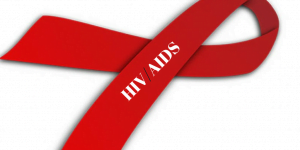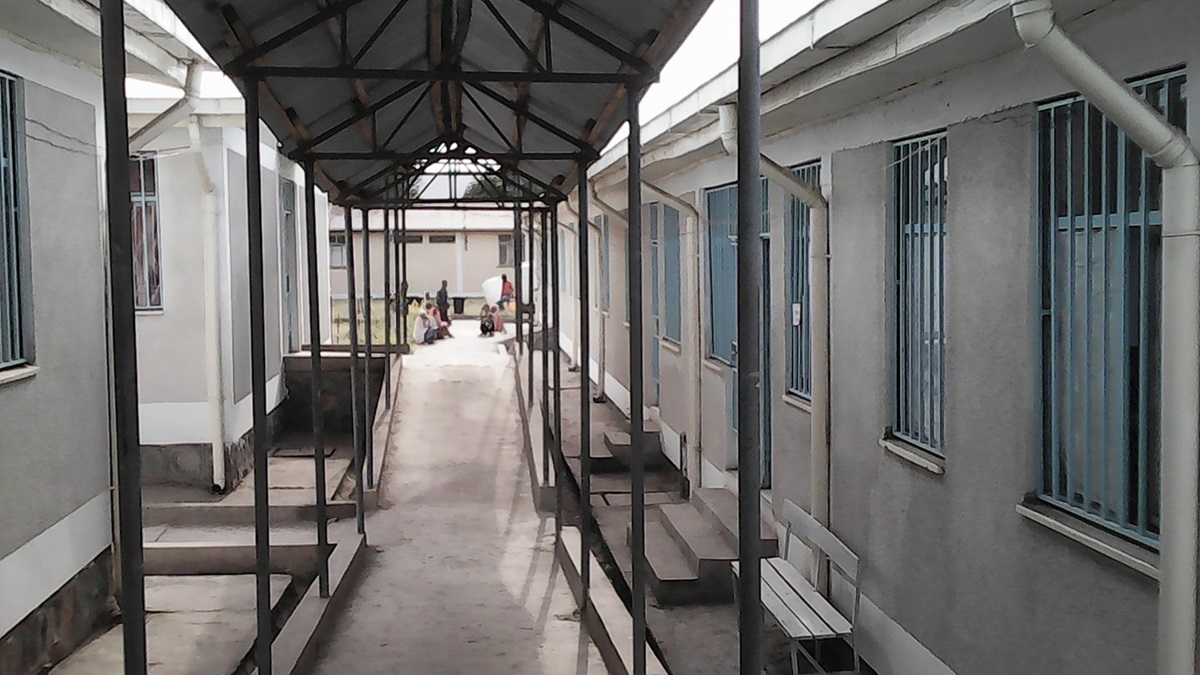Analysis: HIV/AIDS is surging in Ethiopia, again
Samuel Bogale
Addis Abeba – October 06/2017 – Accurate data on the number of Ethiopians who have died of HIV/AIDS in the last three decades in Ethiopia are hard to come bay, but according to an estimate by the Federal HIV/AIDS Prevention and Control Office (FHAPCO), there were on average 19,743 deaths every year, which left behind about 247,250 children orphaned.
Following its official discovery in 1984, HIV/AIDS has seen a rapid spread all over Ethiopia, putting the lives of millions at risk directly or indirectly. Owing to lack of awareness, similar trend is seen in many countries in Africa and Asia.
Like many of these countries, Ethiopia’s fight against HIV/AIDS is one of the few highly paid for projects by western donors, which includes the over US$2 billion contribution by the U.S. government through its program called ‘President’s Emergency Plan for AIDS Relief (PEPFAR)’, making it the ever largest donation coming to the country for HIV/AIDS purpose. Owing to similar coordinated efforts, the spread of the virus has seen a decline over the last two decades especially in urban areas.
The prevalence
The WHO data reveals that up until the end of 2016 more than 70 million people worldwide have been infected with HIV/AIDS of whom about 35 million have died of HIV/AIDS and related complications. Currently, Sub-Saharan African is home to about 36.7 million people living with the virus, making it the most affected in the world.
Data from FHAPCO indicates that there are over 718,550 people living with HIV in Ethiopia alone, a little over 1.18% of the population. According the globally accepted consensus, if the total number of HIV infected people in a given country exceeds the one per cent threshold of the population, that country is considered to be under category of ‘outbreak of the virus.’
The 2016 Ethiopian Demographic Health Survey (DHS) reveals that around 56% of the women and 55% of the men among the surveyed household have never been tested for HIV, an indication the the current number of HIV positives in the country could be a lot more had all the population been tested. And, despite the existence of the large number of people living with HIV/AIDS, only 72% of them are thought to be aware that they are living with the virus; the remaining 28% think they are not infected.
Dr. Achamyeleh Alebachew, Acting Director of Planning, Monitoring and Evaluating Directorate of FHAPCO, told Addis Standard that during the 90s and 2000s the number of HIV infected people was so high that among all the patients admitted to hospitals 1/3 to half tested positive for the virus.
Although the spread of the virus has seen a significant decrease Ethiopia could not able to join the top five African countries to approach to control the HIV epidemic until 2020. According to a recent statement from PEPFAR, Lesotho, Malawi, Swaziland, Zambia, and Zimbabwe are the top 5 African countries where HIV epidemic is coming under control. And as of late, optimism was replaced by talk of the resurgence of the virus, especially among urban population and among university students, throughout the country.
Tough on women
When measuring the prevalence of HIV women tend to be more vulnerable than men. Of all the HIV positives in Ethiopia, 39% are men while women account for the remaining 61%, of which 25% of are commercial sex workers.
According to the FHAPCO, 27,288 people were known to have been infected by HIV during the 2009 Ethiopian calendar; 16,021 (59%) were women whereas 11,267 (41%) were men. Among the three million pregnant women who are receiving medical follow up currently, around 27,000 of them are HIV positives.
According to Abdu Ibrahim, Monitoring and Evaluation Officer at DKT Ethiopia, some of the reasons for that include, but not limited to, men’s domination of the economy, less participation of women in awareness program, and the sexual behaviors that render women more submissive than men. “Polygamy is common in some part of the country that it is common to see men having around three to four wives and can have sexual intercourse with many more,” Abdu told Addis Standard. “We usually don’t see women having sexual intercourse with multiple men but the men have multiple sexual partners.” And according to the U.S. Embassy PEPFAR Coordination Office in Addis Abeba, “gender norms and female physiology” contribute to the fact that women do “have disproportionately higher rates of HIV infection compared to men.” Women are negatively impacted by gender norms on access to HIV services as most of them are dependent on their male partners. For fear of rejection and violence by their partners, women are also unable to discuss their sexual activity and may not make use of health services.
Gender-based violence (GBV) is another major factor contributing to increased numbers among women at risk of contracting HIV. The 2016 Ethiopian DHS report shows that among all the gender based violence in 2016, 7% of them were sexual, and one in 10 women among the surveyed experienced sexual violence. The report also mentions divorced, separated and widowed women as the most affected by sexual violence, compared to married women.
Addis Abeba is the hardest hit
Among the estimated four million residents thought to live in Addis Abeba HIV prevalence stads at a staggering 5% according to the FHAPCO data, which places the city on top of all regions in the country followed by Gambela (4%), Harar and Dire Dawa (2.9% each).
Although most of the residents in the capital are considered to have access to awareness programs, knowledge of the disease, better access to health care and opportunity to obtain preventive mechanisms such as Condoms, currently Addis Abeba is reeling from unprecedented spread of the virus.
Data collected by Addis Standard from Ghandi Memorial Hospital alone, for example, among the 111 mothers who were admitted for delivery in the last 12 months, 31 of them were HIV positive. And among 21 rape victims admitted to the same hospital nine of the victims were infected by the virus. Currently there are only 83 patients who are following HIV treatments at the hospital.
At Yekatit 12 Hospital, another state run hospital, of the 520 people who went for HIV test only in the months of September and October 2016, the virus was found in 64 of them, amounting for 12% of the total number. And at Zewuditu Memorial Hospital, 318 people were tested for HIV in October 2016 of whom 61 were tested positive, about 19% of the total number of people who went for HIV test in that particular month.
A report published on July 25, 2017 on the local weekly Capital newspaper reveals a staggering increase in the numbers of bars and pensions in Addis Abeba. According to the report, 777 new pensions and guest houses were opened in the city the four months preceding the report. These Pensions are mostly used for sexual activities both by young couples and commercial sex workers.
Writing on his Facebook page, Dr. Andrew DeCort of the Ethiopian Graduate School of Theology (EGST) recently recounted his experience while walking “the backside of Chechigna”, a famous red-light district in Addis Abeba. “I walked for about 150 feet (45 meters) and counted 30 bars. Thirty. One after another. On both sides. For a distance of only 150 feet. On one street, among many others. Thirty. I stopped counting. I didn’t bother to count the abundant khat houses and seedy “pensions” where men take their erotic tere siga (raw meat) to settle their stomachs after drinking.”
“Chechigna has the absurd feel of hell on earth.”
What’s missing?
DKT Ethiopia, DKTE, an organization selling family planning and reproductive health products, covers about 80% of the market, including delivery of condoms, in the country. The last 12 months data from DKTE shows that it had imported and distributed 51,421,563 male and 42,076 female condoms of which 22,496,651 were distributed only in Addis Abeba.
In addition, DKTE is also involved in projects of awareness creation and behavior change mostly for university students and commercial sex workers. On one of their projects, Wise UP, there were around 31 centers in the country before two years where DKTE used to reach out to commercial sex workers and supports them with materials, trainings on behavior change, negotiation skills and life skills so that they can leave the job. However, according to Abdu, due to funding related issues the project is currently functioning only in two centers.
For the first decade and half since the prevalence of HIV became the biggest threat in the country, several local and international NGOs have massively been engaged in the prevention of the disease and awareness creation programs. However, the number of NGOs and groups formed to prevent HIV have drastically shrunk in the wake of Ethiopia’s much criticized societies and charities law.
Radio programs funded by donors were the main tools that were used to address the people to create awareness programs. All airwaves have since gone silent, as entertainment and sports talk shows have quietly crept up. “As to me, there is this perception that enough has been done on HIV and the people have enough comprehensive knowledge, so for these reasons financial supports provided to radio programs were cut,” says Sosina, host of Betegna, the only radio program on HIV broadcasting a weekly program on Sheger FM 102.
Nevertheless, the 2016 DHS report shows that comprehensive knowledge of HIV is highest only among the wealthiest households and those with more than secondary education. Among the total population in the country, only half of the women and 69% of the men know the risk of getting HIV can be reduced by using condoms and limiting sex to only one uninfected partner. A figure which shows that awareness programs aren’t as satisfactory as said to be.
The US pays the most
Under the USAID, which remains the biggest foreign aid assisting organization in the country, the PEPFAR program is mainly engaged in combating HIV/AIDS in the country since it was launched in 2003. The program focuses on the prevention of sexual transmission of HIV, prevention of mother to child transmission, communications to encourage behavioral changes, and provision of condoms and other forms of prevention. It also funds the laboratory activities and supply chain management so as to advance the health system.
A new research to be conducted beginning from 03 October, 2017, financed by the US and involving organizations including PEPFAR, CDC (Center for Disease Control), and ICAP Columbia University plans to collaborate with Ethiopian Public Health Institutes. The research is the first of its kind and will be assessing the current status of the virus, changes and challenges the fight against the spread of virus has faced so far.
And on 19 September 2017, the USAID has launched a five year project of Community HIV Care and Treatment Activity at the Hilton Addis, for a budget of US$40 million funded through the PEPFAR. The project will engage in improving the lives of people living with the virus, increasing the health system efficiencies and also creating treatment access to Ethiopians.
In her speech at the launching program of Community HIV Care and Treatment Activity, the USAID mission director Laslie Reed asked the community to commit themselves to helping the HIV positives to live their full lives, mentioning a quote she came across from an HIV positive woman, which reads: “The amount of time we spend at the health facility in the queues – a queue for triage, a queue for the nurse, a queue at the pharmacy and a queue for the labs – it’s too much time. I want to come to the facility only twice a year… I have a life to live.” AS









